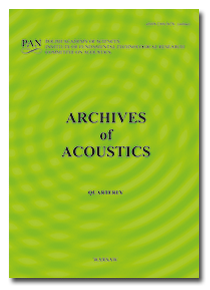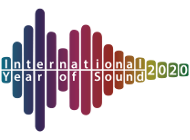Archives of Acoustics,
14, 1-2, pp. 11-27, 1989
An experimental lithotripsy system for the study of shock wave effects
Leszek FILIPCZYŃSKI
Institute of Fundamental Technological Research, Polish Academy of Sciences
Poland
Jerzy ETIENNE
Institute of Fundamental Technological Research, Polish Academy of Sciences
Poland
Anna GRABOWSKA
Institute of Fundamental Technological Research, Polish Academy of Sciences
Poland
Tomasz WASZCZUK
Institute of Fundamental Technological Research, Polish Academy of Sciences
Poland
The authors have developed a lithotripsy system and measurement set-up for the study of shock wave interaction with living tissues. The system consists of an electromagnetical shock wave generator, focusing lens and capacitance pressure pulse measuring hydro-phones. The shock wave pulse pressures obtained with this system can be changed up to 40 MPa (about 400 atm). An additional ultrasonic system enables measurements of the gas bubbles generation, an important factor in the destruction process caused by cavitation. Details of the system concerning the shock wave generation, pressure field distribution, pressure time dependence and measurement technique as well as its practical application possibilities are discussed in the paper.
Copyright © Polish Academy of Sciences & Institute of Fundamental Technological Research (IPPT PAN).
References
D. BACON, Finite amplitude distortion of the fields used in diagnostic ultrasound, Ultrasound in Med. and Biol., 10, 1, 189-195 (1984).
R. T. BAYER, Nonlinear acoustics, U.S. Naval Sea Systems Command. Washington 1974.
A. COLEMAN et al., Pressure waveforms generated by a Dornier extra corporal shock-wave lithotrypter. Ultrasound in Med and Biol, 13, 561-657 (1987).
L. A. CRUM, Cavitation microprojects as a contributory mechanisms for renal calculi desintegration in ESWL. Journal of Urology (1988) [in print].
M. DELIUS, I. EIZENHOFER, R. DENK, H. LEIBICH, W. BRENDEL, Biological effects of shock waves, J. Acoust. Soc. Am., Suplement S XX (1988).





